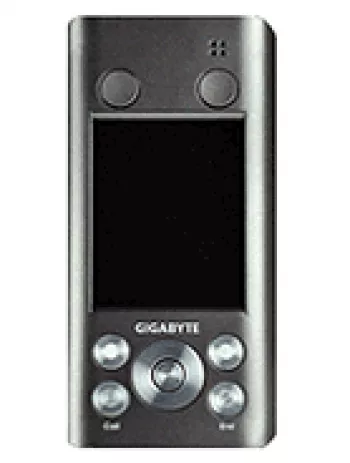
Overview of the Gigabyte g-YoYo
The Gigabyte g-YoYo stands as a distinctive entry in the feature phone market, released during a time when the mobile phone industry was in a state of rapid technological transformation. Announced in 2006, it features a unique set of characteristics that cater to basic mobile communication needs. Despite being discontinued, its compact design and simplicity left an impression among users seeking practical functionality in their handheld devices.
Design and Build
The design of the Gigabyte g-YoYo is tailored for simplicity and ease of use. The device measures 99.7 x 48.5 x 19.8 mm and weighs 105g, making it comfortably portable. Its construction is robust, featuring a silver color that appeals to users looking for a professional appearance. The phone utilizes a Mini-SIM card, catering to the GSM network.
Display
Equipped with a 2.0-inch TFT resistive touchscreen, the phone displays up to 256K colors with a resolution of 176 x 220 pixels (~141 ppi density). Although the screen-to-body ratio stands at around 26%, the display is sufficient for basic functions like browsing simple menus and viewing contact details or messages.
Camera
The Gigabyte g-YoYo features a single 2 MP main camera, which, for its time, provided users with the flexibility of capturing casual photos and videos. While it lacks the sophistication of modern smartphone cameras, it delivered value for those needing a straightforward camera feature for occasional use.
Network and Connectivity
The device supports GSM technology with 2G bands at GSM 900/1800/1900 frequencies. It includes GPRS class 10 connectivity for basic data services, although it lacks EDGE support. Unlike contemporary smartphones, it has no WLAN, Bluetooth, or USB capabilities, reflecting the expected feature set for its era of release.
Memory and Storage
The phone comes with 64MB of internal storage, which back in 2006 sufficed for storing essential data like contacts and text messages. Moreover, it offers a miniSD card slot for users seeking to expand storage, a feature not universally available in all feature phones of its time. Phonebook capacity stands at 500 entries, and it logs up to 20 dialed, received, and missed calls.
Battery Life
Powered by a removable Li-Ion 1050 mAh battery, the Gigabyte g-YoYo provides a standby time of up to 300 hours and a talk time of up to 5 hours. This capacity extended the usability of the phone for typical day-to-day usage, although it requires regular charging in line with use intensity.
Software and Features
Running on a feature phone operating system, the Gigabyte g-YoYo caters specifically to users who prioritize primary functions such as calling and messaging. It supports SMS, EMS, and MMS messaging. However, the device does not support Java-based applications, limiting its customization and application capabilities.
Multimedia and Entertainment
For entertainment, the phone includes 3D games and 3-axis games, adding a playful touch to its otherwise utilitarian design. It supports vibration alerts along with downloadable polyphonic and MP3 ringtones. However, it lacks a loudspeaker and a 3.5mm headphone jack, which restricts its multimedia functionality.
Conclusion
The Gigabyte g-YoYo may not boast the high-spec features of current smartphones, yet it marks an important chapter in the evolution of mobile technology. With its straightforward design, essential capabilities, and reliable performance, it serves as a reminder of a time when phones were primarily about communication. This device is emblematic of the transition period in mobile technology, balancing simplicity and the emergence of more digital features in personal devices.
Main Features of Gigabyte g-YoYo
- Compact design with dimensions of 99.7 x 48.5 x 19.8 mm and a weight of 105g.
- TFT resistive touchscreen capable of displaying 256K colors.
- 2 MP main camera with video functionality.
- Supports miniSD card for expandable storage.
- Comes with an internal memory of 64MB and phonebook capacity for 500 entries.
- Features 3D and 3-axis games for entertainment.
- Removable Li-Ion 1050 mAh battery providing up to 300 hours stand-by time and up to 5 hours talk time.
- Includes GPS for positioning.
- Capable of sending SMS, EMS, and MMS messages.
- Available in a sleek silver color.
Disadvantages of Gigabyte g-YoYo
- No EDGE support, limiting internet speeds to GPRS only.
- Discontinued status - support and updates no longer available.
- Small screen size of 2.0 inches with a low screen-to-body ratio.
- Limited internal memory of 64MB, potentially insufficient for modern needs.
- Lack of a front-facing (selfie) camera.
- No loudspeaker, impacting accessibility for hands-free use.
- No Bluetooth connectivity for wireless data transfer.
- Absence of WLAN (Wi-Fi), reducing internet connectivity options.
- No built-in radio function.
- Missing 3.5mm headphone jack, requiring alternative solutions for audio output.
- No USB connectivity, limiting data transfer capabilities with other devices.
- No Java support for running Java-based applications.
View Also
More Phones
All Rights Reserved +13665 Phones © Mobilawy 2025
























